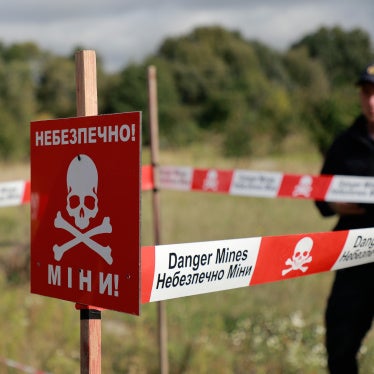Mr. Chairman,
The CMC has prepared a detailed paper that identifies all of the changes in your draft protocol from the GGE Chair’s text and provides an analysis of the new text. The paper is available at the back of the room and on the CMC website.
In introducing your revised draft protocol on Friday, you said that you were taking a “cautious approach.” You were certainly true to your word. We can only describe the revisions as minimal and marginal. Minimal in number and marginal in substance. From a humanitarian perspective the revised protocol is little, if any, better than before. The slight improvements that one can see in a few places are largely exhorting future action, and would not have a real impact on the degree to which the protocol is effective in dealing with the problems caused by cluster munitions.
The revised protocol still would cause more humanitarian harm than good. The revised protocol still allows indefinite use of cluster munitions with just one safeguard—cluster munitions that have been demonstrated time and again to cause unacceptable harm to civilians. The revised protocol still contains the unverifiable provision allowing indefinite use of cluster munitions with a claimed (not confirmed) failure rate of one percent or less. The revised protocol still contains the 12-year deferral period where armed forces can use cluster munitions without any safeguard, even though States Parties have agreed these are so dangerous to civilians they must ultimately be banned.
Indeed, the revised protocol does not at all change which cluster munitions are “in” and which ones are “out.” Moreover, the revised protocol still does not address in any way one of the major reasons why cluster munitions cause unacceptable harm to civilians: their indiscriminate, wide-area effect at the time of use.
The revised protocol has not strengthened the transfer provision at all, despite many calls to do so. It has not moved the victim provision from the preamble to the definitions section, despite many calls to do so. It has not strengthened the victim assistance section, despite many calls to do so.
Several changes have been made in an apparent attempt to make the draft protocol and the Convention on Cluster Munitions more “complementary and compatible,” to cite the now over-used phrase. The draft protocol is better with these changes than without them, but they do not have any real effect on the humanitarian impact of the protocol, certainly not on the oft-stated desire to have an “immediate and substantial” humanitarian impact.
In the preamble and in the so-called “endeavor clause” there are now references to the possibility of future “comprehensive prohibitions or restrictions” on cluster munitions. The added value of reference to comprehensive prohibitions is immediately undercut by the qualifier “or restrictions.” The notion of restrictions not prohibitions is not compatible with the Convention on Cluster Munitions. Similarly, in the endeavor clause the phrase is “more comprehensive,” implying something short of the ban convention.
Adding the phrase, “as an intermediate step,” to the preamble is positive, but let’s face it: not a single non-signatory to the ban convention has indicated that they view this as an intermediate step, or will treat it as such; several have explicitly said that it is the end game, not an interim measure.
While the proposals of some Convention on Cluster Munitions signatories and States Parties have been taken into account, the vast majority have not, and, not surprisingly, those incorporated are the ones with the least humanitarian impact. This revised draft protocol, like its predecessor, is not compatible or complementary to the Convention on Cluster Munitions.
Mr. Chairman, if we can comment on a few other changes in the text:
When looked at carefully, the new restriction on use during the 12-year deferral to instances where one is defending “against attack or threat of attack on its territory,” appears to be largely meaningless, due to the vagueness of “threat of attack,” and due to the qualifiers regarding security cooperation agreements. It appears to say that it is lawful to use cluster munitions whenever it is lawful to use force.
The new provision saying that states should remove from operational stocks cluster munitions more than 40 years old needs further explanation. It seems at odds with the provisions in both Article 4 and Article 5, and it is unclear if these cluster munitions must also be destroyed, and unclear if the provision applies to cluster munitions covered in Annex B.
We do not understand why in Article 13.3(a) the language was cut that allowed for consideration of amendments when reviewing the Technical Annexes of the Protocol.
We find the use of the phrase “consistent with military requirements” troubling, in that it subjects compliance to the vagaries of different national interpretations and implementation.
Finally, we see no real impact from the shifting of the 1% clause from Annex A to Annex B. Those weapons could have been used forever without restriction when included in Annex A, and they can be used forever without restriction when included in Annex B. It is worth noting that the 1% clause was only put in Annex A—at the request of the United States—in September 2010. So the US has in essence a year later given back the concession.
Mr. Chairman, you indicated on Friday that you viewed this revised draft as a “base camp” as states tried to ascend to the summit. In our view, this new camp is barely a stone’s throw from where the journey began years ago, and the mountain top is nowhere to be seen. Surely later this week, the prudent thing for States Parties to do is to pack up their gear and go home, recognizing that the path they have chosen to scale the mountain is the wrong one. The right path has already been carved out by the Convention on Cluster Munitions. Thank you.








